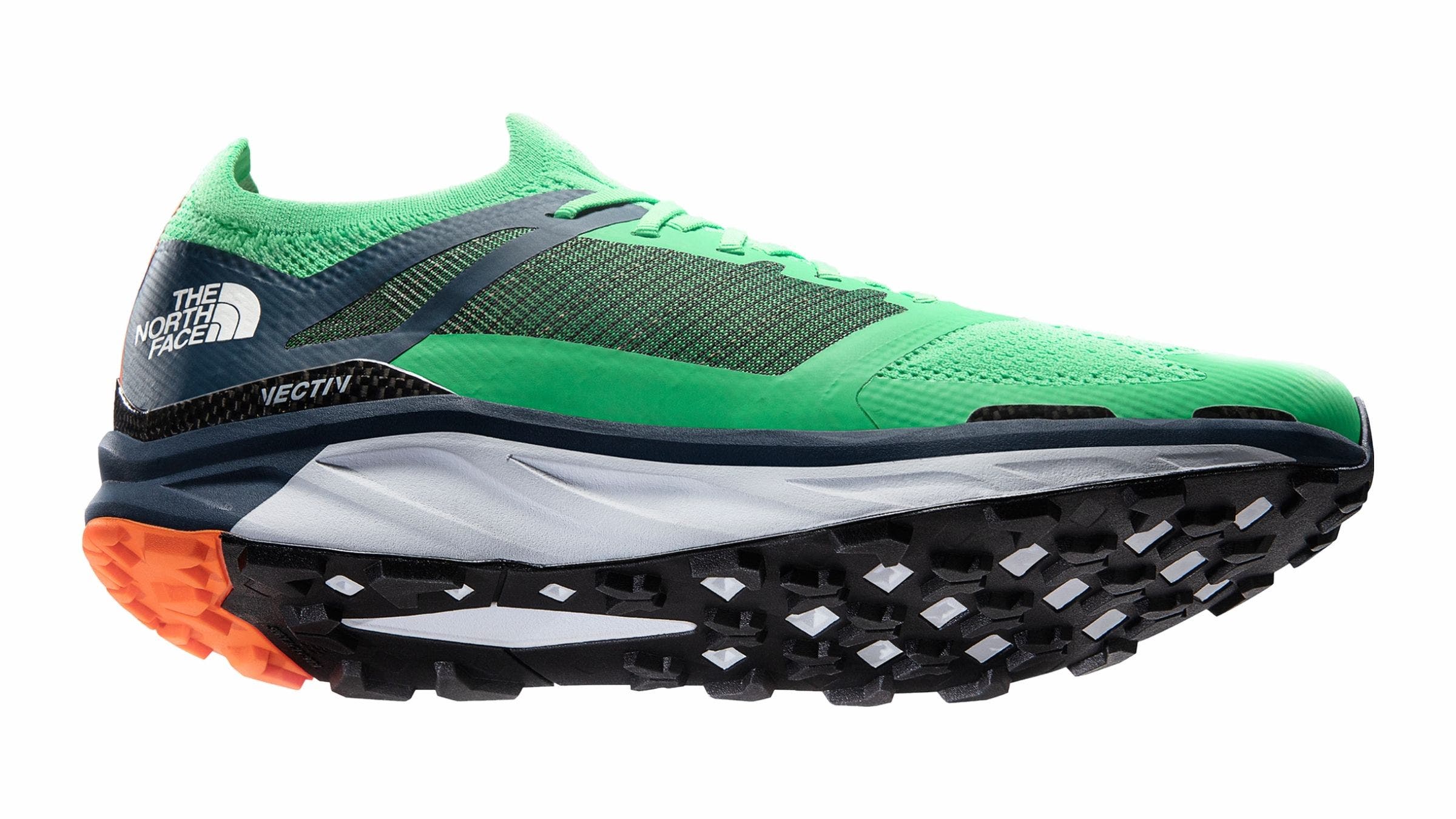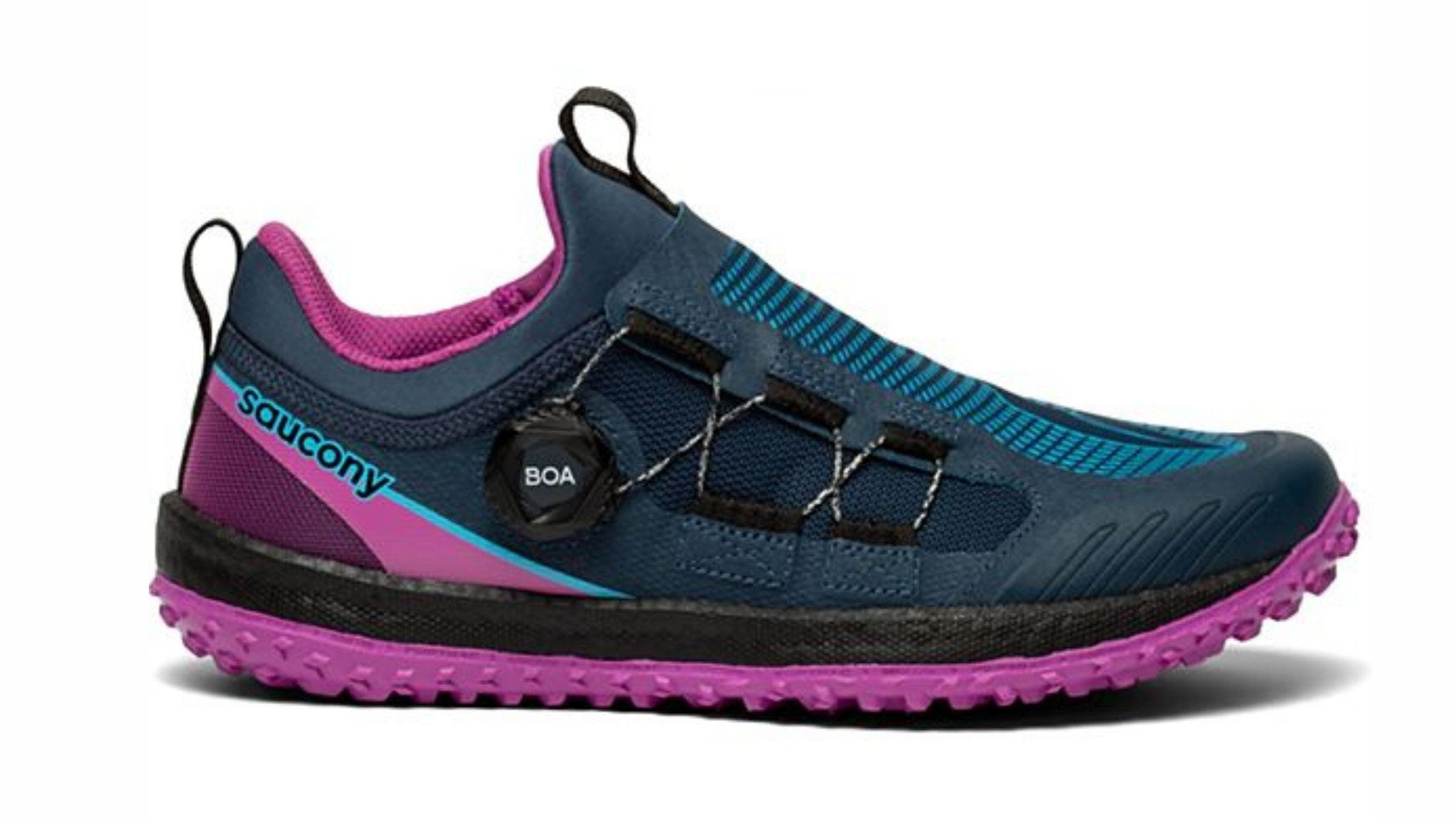If you buy through our links, we may earn an affiliate commission. This supports our mission to get more people active and outside.Learn about Outside Online's affiliate link policy
Ask A Gear Guru: What's the Deal With These $375 Speedland Trail Shoes?

(Photo: Speedland)
Running shoes aren’t cheap. But then again, it seems like nothing is these days. Some triathletes wouldn’t think twice about spending $9,000 on a new tri bike, while others recoil at horror at the thought of a $975 wetsuit. Those in the latter group will likely feel queasy when they learn about Speedland’s new $375 trail shoes, the SL:PDX. Simply because triathletes typically love things that are “endurance extra,” we’ve brought to our readers an extensive review on these very interesting (and quite frankly innovative) shoes.
Not looking to spend $375 on trail shoes? Read on anyway because it’s possible we’ll see this “flippable carbon insole” technology in the near future, as the new Speedlands have the ability to dial the shoe’s ride in just seconds. Also, if you’re in the market for new trail runners, we’ve got a roundup of shoes (kind of, sort of) similar to the new SL:PDXs far below.
Speedland SL:PDX Review
Dial your preferences and float over the trails with precise agility — as though your shoes were tailor made to fit not just you but also your local terrain, providing no-compromise performance. With options to adjust flex, fit, drainage and traction, the SL:PDX becomes quite literally the shoe for you. We found that Speedland delivers, with a shoe that let us run in complete comfort and with total confidence.

Specs
| Weight | 10.3 oz / 9.9 oz with trimmed lugs |
| Stack Heights | 28mm heel / 23mm forefoot |
| Offsdet | 5 mm drop |
| Price | $375 |
Speedland SL:PDX Review: What’s New
This is a completely new concept that uses modular components, crafted with the best of everything available on the market, to construct a no-holds-barred trail running experience. The founders applied decades of shoe development, absent the usual commercially-driven overrides, to orchestrate a performance shoe that is more “equipment” than “apparel” so that the user won’t feel any hesitation running their best. A “small batch” approach to manufacturing – only 1,200 pairs are being made in the first run of production — guarantees an attention to detail that you can feel. Read on for our review of the new Speedland SL:PDX.
This Is the Shoe for You If …
You consider your trail shoes to be an extension of your body and training and don’t want to compromise. You spend so much time and effort directed at marginal performance gains that you are willing to invest the additional cost to purchase a shoe that will allow you to push the envelope — because it provides the best fit and performance, and allows you to be your best. And you like really nice-fitting shoes.

Speedland SL:PDX Review: First Runs
Testers were wowed by the performance of Speedland SL:PDX during their initial review, even on non-Portland, Pacific Northwest trails for which the founders designed the shoe. The more the technical the trail, the more the shoes showed off, whether on sandstone-riddled, dry mountainous singletrack, deep sand, rocky washouts, or even over “open prairie, thrashing through knee-high grasses with every step uncertain on the knobby tussocks.” Whatever the terrain, testers raved, “They showed off in every context.”
One tester observed the shoe felt “like it was made just for me” and performed with “sure-footed agility” and “reliability” on a wide variety of surfaces. Glowed another tester: “They are the most comfortable, and probably most capable trail shoe I’ve ever worn.”
It wasn’t any one quality that shined through, but rather, the combination of innovative aspects that came together to leave such positive impressions. The shoe’s many options to personalize the stiffness, lugs and fit means it easily morphs into different rides, even allowing you to adjust some of the fit and feel on the fly. But, apart from the ability to customize, the premium materials and design make your feet smile.
The upper is made of knit Dyneema, a Netherlands-based fiber that is reportedly 15 times stronger than steel, and, they say, gets its positive attributes through long-molecule chains and tight intermolecular bonding. Whatever that means, it feels both durable and comfortable, wrapping the foot in a stretchy mesh, while plush padding around the heel and multiple straps over the instep hold your foot securely.

Add to that the security the unique precision of not one, but two, BOA Fit System dials that secure the wrapping support straps — one for the lower part of the foot and the other for the upper. The dual BOA Li2 wheels let you literally dial-in the precise fit to optimize comfort and security for your foot shape and preferred hold on different parts of the foot. For the first time on a running shoe, these dials are also multidirectional, allowing you to either advance or back off tension click by click, which we found exceptionally useful for creating the right tension on each and for adjusting the fit on the run as terrain conditions changed or our feet got sweaty or swollen.
The 3mm Michelin textile web outsole is both grippy and quick to shed mud, with aggressive lugs that can be clipped to match your form and the terrain. You can also open drainage ports for runs with water crossings. The flexible sole wraps around underfoot terrain and provided excellent traction on firm or soft footing, wet or dry.

Inside, you step down into a contoured layer of Pebax foam — think super-shoe soft, bouncy and resilient — that serves as both sock liner and the top half of the midsole. Lying between it and the thin, flexible EVA bottom platform, you find a removable Carbitex carbon-fiber plate. Removable because it is stiff in one direction and flexible in the other, allowing you to easily flip it over and adjust the ride. The “stiff” side still flexes quite easily but provides a powerful, energy-return pop on toe off. Turn the plate over and you get more of a free-flex feel with the plate providing a bit of stability — or remove the plate completely if you prefer a more minimalist feel for the ground. Note: Unlike clipping off outsole lugs which is a permanent modification, you can flip these as often as you like to match the terrain or how you feel that day.
However they are configured, we felt sure-footed and swift in them. “My biggest impression was that I didn’t need to hold back, because they made me feel confident in my landings and stability,” said one tester. Another praised the ride for being “both close to the ground and completely cushioned — a remarkable combination of stability, balance, comfort and trail feel.”
Downside? We did have a weed snag and pop one of the Speedland BOA dials out, releasing the tension during our review — but to be fair, we were going through pretty thick stuff, and resetting the fit with a quick turn of the dial was far easier than retying a lace. Also in terms of fairness: no testers did a really long run in them yet, and if there is a weakness that might reveal it, as these shoes ride best when dancing over terrain at a good pace. But the Pebax foam will coddle your feet for as long as your stride will hold up and we’re anxious to give it a go at the soonest opportunity.
A bonus: the upper is stitched to the sole, for durability and because this “Dyneema moccasin stitch” makes the shoe easier to recycle, given there is no toxic glue for sealants. Speedland keeps with the green theme (and color) through a give-back program that invests 10% of its profits to outdoor programs that will be selected with the help of its athletes.
Worth the price tag? That’s hard for us to decide for you, but one tester bought a full-price pair for his significant other, and they will no doubt be the pair we reach for when heading off road in the coming weeks and months.
Speedland SL:PDX Review: Similar Shoes
While these are entirely singular shoes, if you’re not looking to spend $375 (and get in line for some of the few pairs on offer), there are three similar options on the market:
The closest might be TNF Flight VECTIV, Saucony Switchback 2, La Sportiva VK BOA, Salomon S/Lab Sense 8 Soft Ground
The North Face Flight VECTIV

$200, thenorthface.com; 10.1oz. (men), 8.6oz. (women); 8mm drop
This shoe disrupts the trail running shoe world by incorporating carbon fiber technology into its top-shelf rocker, reducing impact and maximizing energy on all surfaces. Everything is completely new here, and it took The North Face two years of development to bring out the VECTIV online. The Flight VECTIV brings “mid-cushioned, disruptive rockered technology” to the trails. This is the shoe for you if you want a shoe that is optimally suited for those who run smoother trails and need some impact reduction — but don’t want the absorption that plagues other maximalist shoes. These rockered shoes are not overly cushioned and, although stiff, they provide a smooth roll-through to toe-off, akin to carbon-plated road shoes.
Saucony Switchback 2

$140, saucony.com; 8.8oz. (men), 7.8oz. (women); 4mm drop
With the refined BOA lacing system delivering a superior, predicable, dialed-in fit and allowing for on-the-fly adjustability and quick transitions in off-road trails, the Switchback 2 is an off-road wondershoe. The first Switchback was a favorite, and this version improves everything — from the asymmetrical wrap of the BOA closure system to the braided nylon rock plate. With a low stack height and only 4mm offset, the Switchback 2 is minimalist — and that close-to-ground trail feel allows for tremendous proprioception and capricious agility. The feel may be too close for comfort for heavier-footed trail runners, especially those taking on gnarly terrain, but the rock plate in the forefoot and Saucony’s proprietary, bouncy cushioning material provide more protection than one would think, impressing testers with the level of confidence they had even on technical descents. The flexible outsole with outstanding grip only helped boost an aggressive attack on the trails.
La Sportiva VK BOA

$130, sportiva.com; 6.3oz. (men), 5.2oz. (women); 4mm drop
The intended purpose of this shoe, as per its “VK” moniker, is running uphill in competition. A Vertical Kilometer is all about finding your anaerobic threshold and embracing it, along with lung-searing pain. A shoe designed for that endeavor is understandably extremely light, minimalist, flexible and fits securely while leaning flexibly forward. The BOA system gives these slipper-like ascension specialists a custom-like fit that is easily dialed up for a tighter hold on the descent, when you can dance delicately down the trail to avoid any hard impact due to the lack of forefoot cushioning. Not racing straight uphill? The VK Boa is for you if you like to feel fast and connected, with the ultra-secure hold of a sprint spike and a minimalist layer of foam over a flexible rock plate between you and the ground.
From Podium Runner